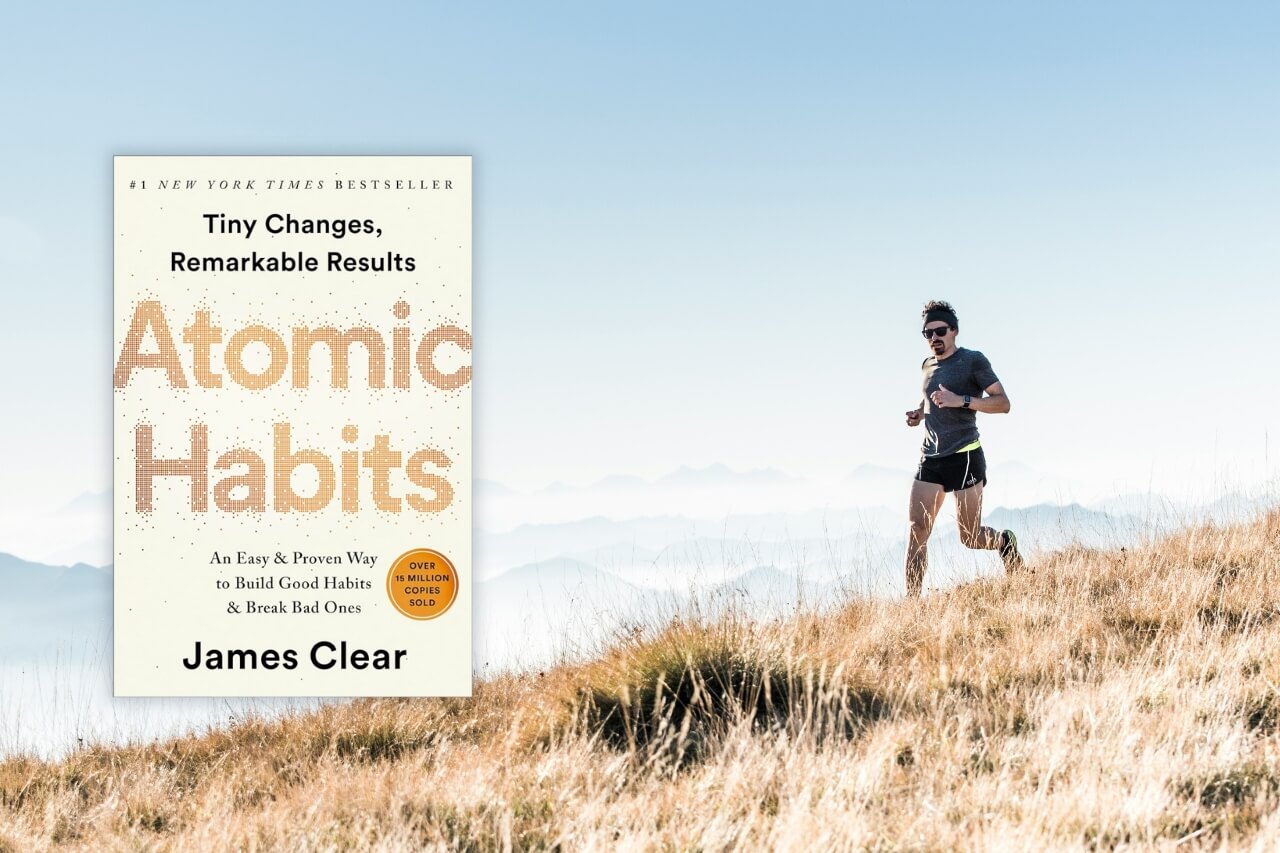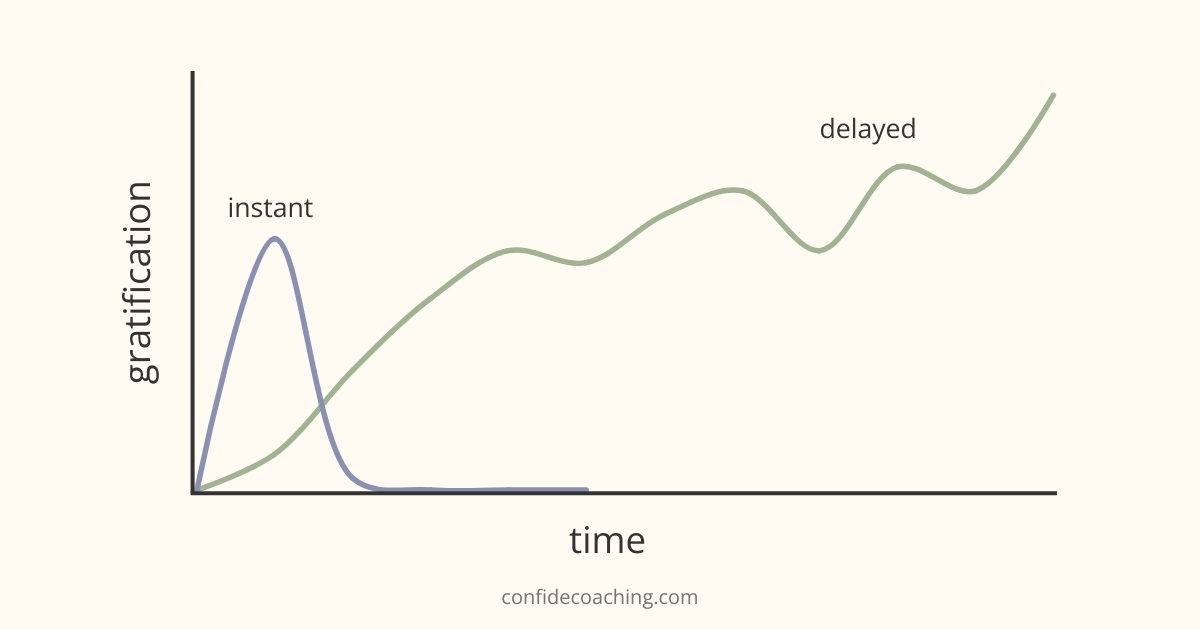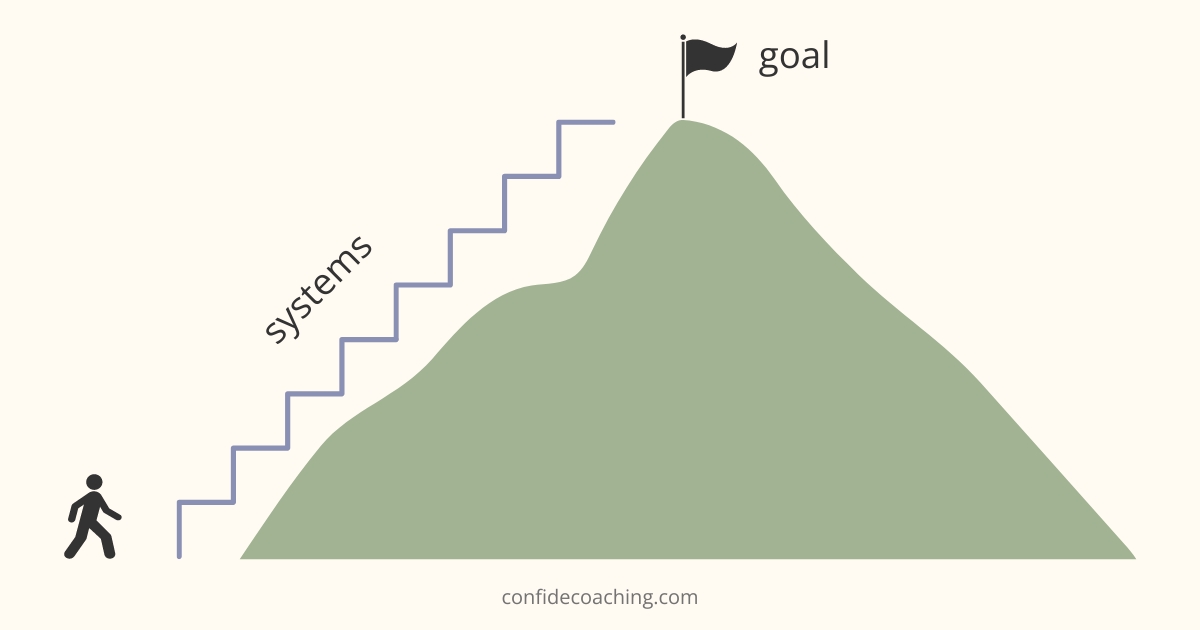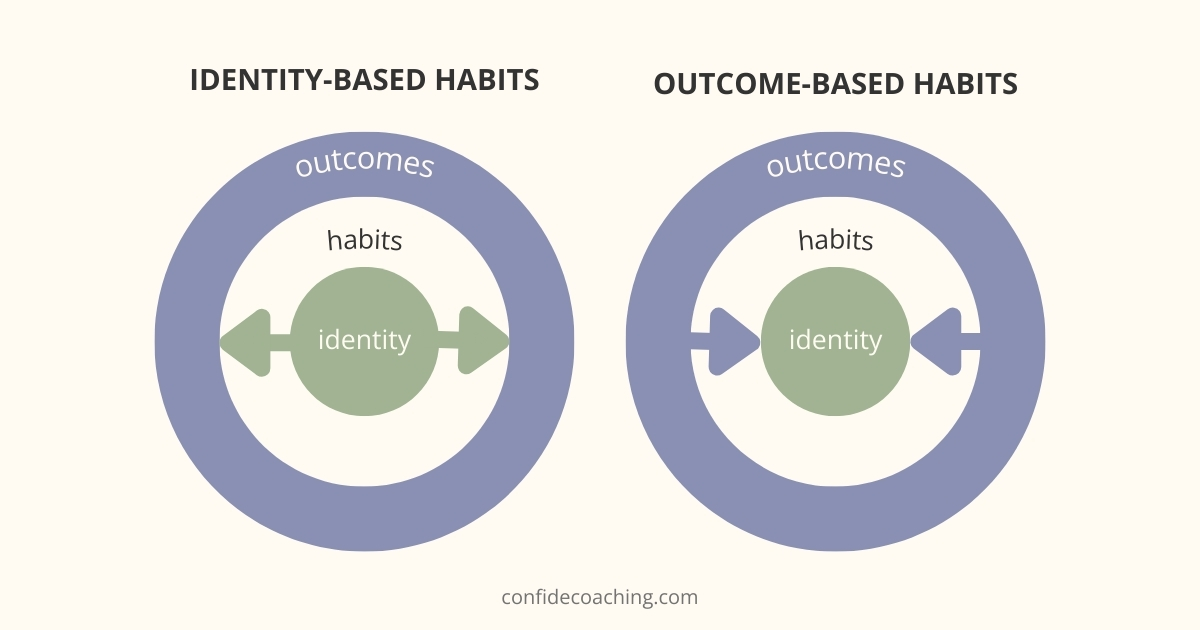
In “Atomic Habits,” James Clear presents a crucial idea: our habits are the unseen architects of our lives. These habits, which frequently go unrecognized, have a profound influence on our behavior and, as a result, shape our future.
But Clear’s book isn’t just about ideas; it gives us real ways to change our daily routines to get the results we want.
In Part 1 of our series on “Atomic Habits,” we explore the specific roles that habits play in shaping both our lives and our identities, and we learn how to harness the power of our behavior for personal growth. Then, in Part 2, we take a deep dive into James Clear’s “Four Laws of Behavior Change,” providing a comprehensive blueprint for cultivating good habits and breaking bad ones.
Ready? Let’s get started.
The Role of Habits in Shaping Our Lives
1. Unconscious Habit Formation and Its Impact: We form habits often without realizing it. Take, for example, snacking while watching TV or having a drink to relax after work. What might start as an occasional treat can quickly turn into a regular habit, where you find yourself reaching for a snack or a drink as a default response to the situation. These seemingly small actions can significantly influence your eating and drinking habits and overall health, showing how easily our routines can shape our daily lives.
2. The Brain’s Role in Automating Behaviors: Our brains are wired to make things easier for us by turning repeated actions into automatic habits. This is great for efficiency, but it also means we can easily develop habits that aren’t good for us. Mindlessly scrolling through social media every time you have a few minutes of downtime like while waiting in line, is a habit formed by the brain automating this action as a default way to fill brief moments of idleness. Bringing awareness to how our brain automates such processes is a crucial first step to changing them.
3. Immediate vs. Delayed Return Environment: We live in a world that often rewards immediate returns over long-term gains, making it challenging to stick with good habits that don’t show immediate results. For example, deciding to watch Netflix instead of working on a presentation that is soon due can be tempting. Netflix offers immediate relaxation and entertainment, while working on the presentation can be stressful and tasking. The long-term benefits of dedicating time to work on the presentation, such as professional growth and career advancement are obvious, but they are not immediately present.
4. Evolutionary Perspective on Gratification: Our preference for immediate rewards goes back to our evolutionary past. In earlier times, quick rewards were essential for survival. Today, this evolutionary bias can lead us to choose instant gratification, like scrolling through social media or watching Netflix, over activities with delayed rewards, like exercising or working on a presentation. Understanding this can help us see why it’s sometimes hard to stick with good habits or choose what we know is essentially better for us. It is important to point out that one does not exclude the other; both immediate rewards and delayed gratification play an important role in balancing our needs and motivations. Recognizing this can be key in creating a more sustainable approach to habit formation.

Good vs Bad Habits: The Struggle of Immediate Challenges and Delayed Outcomes
In the realm of habits, we often encounter contrasting dynamics that shape our choices and behaviors. Two significant aspects that influence our habit formation are the delayed consequences associated with bad habits and the immediate negative experiences tied to good habits. Let’s explore these dynamics further and understand how to manage them effectively for better habit formation.
Delayed Consequences of Bad Habits
Bad habits often carry hidden costs that don’t become apparent until later. These habits, as we have already discussed, offer immediate gratification, providing a quick sense of pleasure or relief. However, the adverse effects may not surface until weeks, months, or even years down the road. For example, indulging in unhealthy eating habits may bring instant satisfaction, but the long-term consequences on health and well-being become evident only over time. On the flip side, adopting good habits often involves immediate negative experiences, as we explore below.
Immediate Negative Experience in Good Habits
When we embark on a journey of self-improvement or attempt to cultivate positive changes, we may encounter initial discomfort, setbacks, and challenges. These immediate obstacles can be discouraging and may even lead us to question our commitment. For instance, starting a workout routine to lose weight can be physically demanding and mentally taxing in the beginning. Especially as results take time to start showing. However, these early struggles are part of the process of building lasting positive habits and indeed as Dr. Huberman reminds us, the struggle is an indication of neurological learning and adaptation.
While it can be hard to embrace the immediate negative experiences as integral steps toward long-term benefits, in “Atomic Habits” Clear offers us a road map to navigate the journey of habit formation. This road map is rooted in understanding the importance of systems over goals. The key to lasting change lies not in setting ambitious goals but in creating effective systems and habits.
The Importance of Systems Over Goals
The Role of Progress in Motivation
Progress is the heartbeat of motivation. The most exhilarating feeling for the human mind is the sense of moving forward. This sensation of advancement, no matter how small, fuels our drive and persistence. It’s a universal human experience to seek progress, which often manifests in various forms such as striving for status, prestige, rank, or simply personal growth. For some, the pursuit of external validation (status, accolades) is paramount. However, this external pursuit can often lead to dissatisfaction and a relentless comparison with others, overshadowing one’s own achievements and growth. Furthermore, external benchmarks are frequently shifting, making them unreliable markers of true progress.
In contrast, focusing on internal measures of progress, such as personal improvement or mastery, offers a more sustainable and fulfilling approach. By evaluating success based on incremental improvements in our own performance, we create a self-referential standard that is both attainable and continuously motivating. This internal focus acknowledges that while there may always be someone better, our individual journey of growth and improvement is unique and immensely rewarding. Emphasizing internal metrics fosters a sense of self-competence and intrinsic motivation, which are essential for long-term engagement and satisfaction in any endeavor.
In the next section, we will discuss how we can weave our motivation into a solid system, as outlined in James Clear’s “Atomic Habits,” to effectively achieve our goals.
Differentiating Between Systems and Goals
In “Atomic Habits”, James Clear underscores the importance of distinguishing between systems and goals in the pursuit of personal development. He posits that while goals signify the destinations we aspire to reach, it is the systems – the structured, daily habits and actions – that propel us towards these targets. This perspective reorients our focus from distant endpoints to the immediate routines that cumulatively dictate our journey towards success. Here, Clear advocates for a habitual approach where the consistency of our daily practices plays a crucial role in achieving our long-term ambitions.

To illustrate the difference between systems and goals, consider the objective of writing a book – a common goal for many aspiring authors. The goal in this case is the completed manuscript, the tangible end product. Now, let’s focus on the system: this would involve establishing a daily habit of writing, perhaps setting aside a specific time each day to write a certain number of words or pages. The system also might include activities like researching, planning the book’s structure, and revising drafts.
In this example, the goal – completing a book – is a singular event, whereas the system is the ongoing process that makes reaching that goal possible. By concentrating on the system, you’re ensuring consistent progress and skill development, which are essential for writing a book. This approach keeps you engaged and improves your writing over time, regardless of the status of the manuscript.
So, while the goal is your destination, the system is the journey. By focusing on the journey – the daily writing habit, in this case – you’re more likely to reach the destination. Furthermore, even if the goal shifts or evolves (as goals often do), the system ensures that you’re still making progress, improving your skills, and gaining satisfaction from the process itself. This distinction highlights why systems are often more effective than goals alone: they keep us moving forward and adapting, even when our end targets change.
Aligning Habits with Desired Outcomes Using the Bullet Journal Method
Embracing the principles of James Clear’s “Atomic Habits,” a structured habit-tracking system like the Bullet Journal Method can be a game-changer in aligning daily actions with overarching goals.
The Bullet Journal, conceptualized by Ryder Carroll, is a dynamic and adaptable tool that serves as a combined personal planner, diary, and to-do list. This method not only makes your habits visible but also intuitively organizes your tasks, goals, and daily routines. As you engage with this method, each small step taken is clearly marked, providing a tangible sense of progress.
This approach aligns seamlessly with Clear’s philosophy: it’s about crafting a system where everyday actions consistently lead to the achievement of larger goals. By tracking your habits, you gain valuable insights into what works, allowing for timely adjustments while maintaining motivation through visible progress.
Habit tracking transcends mere goal setting; it becomes a journey of continuous engagement and self-assessment, breaking down larger ambitions into small, manageable tasks.
Source: YouTube / Bullet Journal
The Power of Self-Identity in Habit Formation
However, while systems like the Bullet Journal are fantastic tools for maintaining focus and consistency, for truly transformative change, it’s essential to develop a new identity around our habits or goals.
James Clear emphasizes this in “Atomic Habits,” where he discusses the profound impact of habits on our identity.
The activities and routines we consistently engage in gradually mold our self-perception. The intertwining of habit and identity is a two-way street: our habits not only reflect who we are but also shape who we believe ourselves to be.
The Transformation of Habits into Identity
Over time, our habits start to weave into the very fabric of our identity. This transformation is a gradual process where repeated actions reinforce our perception of ourselves. For instance, if you start jogging regularly initially you may see it as just an activity. However, as this behavior becomes a regular part of your routine, you start to see yourself as a runner. This shift in identity is powerful because once a habit is tied to our identity, it’s no longer just something we do, but a part of who we are, making it more sustainable and less reliant on external motivators.
Using Identity to Inform Habit Development
Understanding the link between identity and habits provides a powerful strategy for developing new habits. Instead of just focusing on the behavior itself, Clear suggests starting with the identity you want to cultivate. Ask yourself, “Who is the type of person that could get the outcomes I want?” For example, if the goal is to write a novel, start by adopting the identity of a writer, which then naturally influences your habits – writers write regularly, seek inspiration, and read extensively.
In this way, habit formation becomes a process of becoming rather than just doing. By aligning your habits with the identity you aspire to, you create a strong foundation for lasting change. It shifts the focus from what you want to achieve to who you want to become, making the journey of habit formation more meaningful and personal.

Making New Habits Stick
For habits to become deeply rooted in our lives, they often require more than individual effort; they need reinforcement through social components or a sense of personal pride. This dual approach leverages our innate desires for social belonging and self-esteem.
Social Component in Habit Formation
Our social environments play a pivotal role in shaping our habits. Humans are inherently social beings, and we often look to our social groups for cues on how to behave. By immersing ourselves in communities where desired behaviors are the norm, we tap into the powerful force of social influence. Using again the example of running, joining a running club not only provides a structure for regular exercise but also integrates us into a community that values fitness and health. This social reinforcement makes the habit of running more appealing and easier to stick to.
James Clear suggests leveraging this by intentionally choosing social circles that embody the habits we wish to adopt. When a desired behavior is normalized within a group, it becomes more attractive to us. This alignment of personal goals with group norms creates a synergy that accelerates habit formation.
The Role of Pride in Habits
Taking pride in our actions is another crucial factor in making habits stick. When we feel proud of our habits, we’re more likely to maintain them. This sense of pride is not about boasting or external validation, but rather an internal satisfaction and acknowledgment of our efforts and achievements. For instance, when someone takes up a new habit of playing an instrument and starts to see improvement in their skills, the pride that comes with this progress is a powerful motivator to continue.
But the interplay of pride and habit formation is a delicate balance. It requires you to recognize and celebrate your small victories, reinforcing positive behavior. Documenting progress, either through a journal, like the Bullet Journal we discussed above, or sharing achievements with friends, can bolster this sense of pride.
As you can see, making habits stick is not just a matter of willpower; it involves strategically leveraging your social environments and nurturing a sense of pride in your actions. By doing so, you create a robust support system for your habits, making them a natural and enjoyable part of your life.
In Part 2 of our series, we delve into practical strategies for developing lasting habits, keeping good habits on track even when your motivation dips, and breaking free from bad habits, all based on James Clear’s “Four Laws of Behavior Change”. Discover why “Atomic Habits” has been a bestseller for almost five years, as we provide actionable steps and clear guidance to help you transform your daily routines and ultimately, your life. Don’t miss this opportunity to learn how to make meaningful changes that stick.

Paul Strobl, MBA, CPC
Owner of Confide Coaching, LLC
Paul is a Master Life Coach for GenX and GenY executives and business owners. Originally from Houston, Texas, he has been location independent for most of his adult life. He currently resides in the Rhodope Mountains of Bulgaria near the Greek border with his brilliant wife, 14-year-old stepson (officially adopted in 2021!) and a Posavac Hound rescue.
References
James Clear. “Atomic Habits.” 2018. Avery. ISBN-13: 978-0735211292.
Peter Attia. “#183 – James Clear: Building & Changing Habits.” November 8, 2021. (https://peterattiamd.com/jamesclear/)

